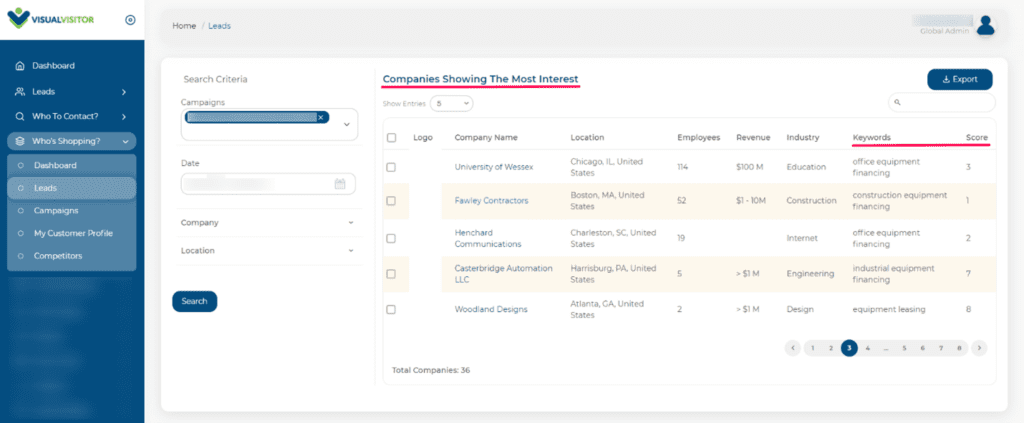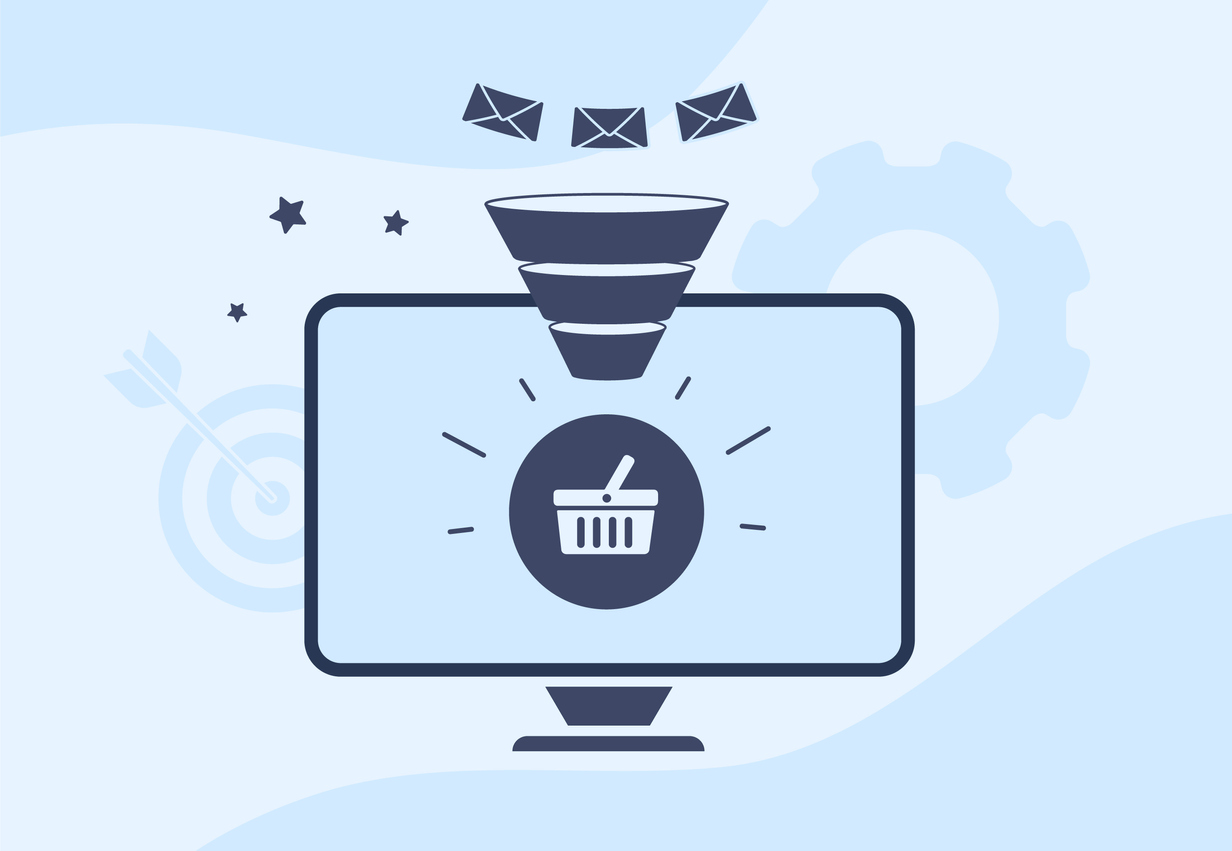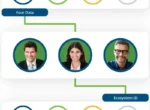
B2B buyers spend a lot of time researching online and only rarely do they reach out to a sales rep. What does this mean for B2B sellers? Waiting for buyers to make the first step is a losing strategy.
Fortunately, there are ways to detect these elusive leads before they reach out to you-or your competitors. With intent data, you can identify buyers when they’re still in the online shopping phase of their buying journey. This is crucial given that the earlier you contact a lead, the more likely you are to convert them.
To help you learn more about intent data, we’ve defined some key terms below.
- Intent Data: A business’s web-based consumption constitutes intent data. It indicates their intention to buy a product. These online activities are aggregated and delivered to sales teams who utilize it to identify leads and predict buyer behavior.
- Account Based Marketing (ABM): A form of marketing which works by targeting specific accounts that have a greater chance of converting. Intent data is often used to determine which accounts are worth targeting.
- Lead Scoring: A method of assigning value to accounts based on sales conversations, email open rates, and intent signals. This score determines which leads are high priority.
- Intent signal: An action that indicates a user’s interest in a topic or product. Reading blog posts, registering for webinars, and downloading eBooks all qualify as intent signals.
- “In-Market” Account: A company that is actively researching topics relevant to your business. In doing so, they are signaling their intention to purchase your products.
- Buyer Journey: The steps which lead to a purchase. Generally, this includes recognizing a problem, researching different solutions, and then deciding on a specific product and vendor.
- Ideal Customer Profile (ICP): A set of characteristics which define the leads that are most likely to become customers. Firmographic data, including industry, location, size, and revenue, as well as intent data factor into an ICP.
- Buyer Persona: A set of characteristics which define the person most likely to benefit from your products. While an ICP describes an ideal business, a buyer persona represents an individual. Seniority level, job description, and department all factor into a buyer persona.
- Natural Language Processing (NLP): A form of AI that concentrates on the interactions between computers and human (natural) languages. Computers are programmed to process huge quantities of natural language data.
- “Spiking” Intent: Online activity which indicates a user’s surging interest in a topic. To accurately predict a spike, you need to first establish a baseline of interest.
- Topic Clusters: A set of related topics which should be studied to obtain a more complete view of a company’s interests.
- Target Account: A company that matches your ICP. These accounts are more likely to convert and thus deserve your attention.
- Target Account List (TAL): A list of companies your marketing team is targeting due to the fact that they match your ICP. Concentrating on these accounts will earn you a greater ROI.
- Use Cases: A list of things you can do with intent data including:
- Account prioritization
- Lead scoring
- Content marketing
- Account-targeted digital advertising
- Event planning and management
- Customer retention
- Account-based demand generation or content syndication
- Publisher Data: Intent data sourced from a publisher’s portfolio of web properties. This data may be high-quality but is limited in quantity.
- First-Party Intent Data: Intent data collected from your web properties, social media accounts and email systems. This includes know data (when a visitor fills out a form) and anonymous data tracked by pixels.
- Third-Party Intent Data: Intent data collected by an intent data vendor. This includes exchange data, public data, peer review site data, co-op data, and publisher data.
- Co-Op Data: Intent data sourced online from agencies, research firms, publishers, event firms, and tech vendors. This kind of data offers less coverage than exchange data, but it can be more nuanced.
- Research Behavior: Online activities which indicate a user’s interest in a topic. These actions function as intent signals and factor into their lead score.
- Content Syndication: The process of republishing your content on a third-party website. In doing so, you can share your branded content with a wider audience. This content is typically gated to collect contact data.
- Exchange Data: Intent data collected via ad exchanges. Although this data has less analytical depth, it provides wide coverage and offers an enormous volume of data.
- Intent-Qualified Account (IQA): An organization judged qualified for follow-up based on its interest in a product or service.
- Intent-Qualified Lead (IQL): An individual within an organization that is judged qualified for follow-up based on the organization’s demonstrated influence in a product or service.
- Originating Locations: The geographic location where an intent signal was detected.
- Topic Taxonomy: The classification of topics utilized to measure intent. Topic-based intent data works by detecting intent signals. As a result, each topic must undergo AI-enabled testing and training before it can be added to the taxonomy.
- F. I.R.E.: An acronym for fit, intent, recency, and engagement. F.I.R.E. is a popular model used by B2B sellers and marketers to organize their data.
- Fit: Data that matches your ICP.
- Intent: Data concerning a business’s online behavior which expresses their intent to purchase a product.
- Recency: Recency indicates when important events occurred.
- Engagement: Data which identifies the accounts that are engaged with your sales and marketing teams.
- Intent Tracking: The act of monitoring accounts’ online behavior to find evidence of their intention to purchase a product.
- Intent Keywords: The process of assigning intent to an organization based on the keywords present in the copy of pages visited by employees.
- Activation Point: The point when intent data is utilized for a specific purpose or use case. Some intent data providers allow you to choose activation points, others have intent data built around their proprietary activation points.
- Account-Based Orchestration (ABO): Organization alignment which enables Account Based Marketing.
- Lead Prioritization: The practice of selecting accounts to target based on their likelihood of becoming a customer. You can use this technique to rank you target-account list.
- Intent Data Source: Where an intent signal originated from. Intent data sources include first-party and third-party intent data.
- Intent Topics: The process of assigning intent based on the context of a specific web page. By analyzing all of the page’s content, you can get a better understanding of the user’s intent.
- Public Data: Data gathered from public sources including social media platforms. This data is not very specific but it does provide greater coverage.
- Programmatic Advertising Campaign: The practice of using NLP to automate the purchasing of digital advertising space. Advertisers can utilize intent data improve digital-ad campaign performance by limiting ads to the accounts that have already expressed intent to purchase their products.
Interested in intent data? Visual Visitor’s Who’s Shopping tool tells you who’s actively searching for your products or services online. These high-quality leads are expressing interest, or intent to purchase your products. By logging into your Who’s Shopping Dashboard, you can get a snapshot of these leads, including a breakdown by industry, employee count, and annual revenue. Prospecting is a whole lot easier with Visual Visitor.
Leverage the power of intent data today. Sign up for a free demo.





